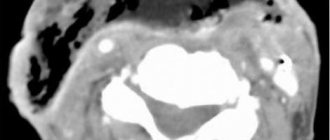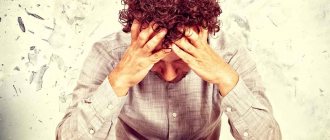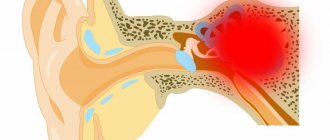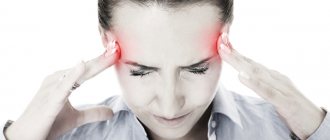General information
Mysophobia , or otherwise fear of pollution, is a psychological disorder and is expressed in the form of an obsessive fear of getting dirty, being in a polluted room, and in general, of coming into contact with dirt and potentially contaminated objects.
It should be distinguished from germophobia, verminophobia, bacteriophobia (fear of germs) and other phobias , where fear consists of the fear of contracting an infectious bacterial or other disease when interacting with contaminated objects and the risk of getting germs, for example, on your hands. If earlier the desire to wash your hands was a sign of fear of dirt and obsessive-compulsive disorder , then later the American psychologist G.S. Stellivan found out that the basis is not a fear of dirt and germs, but solely the desire to ensure that hands are always washed.
Despite the fact that the disorder is quite rare, many famous people suffered from it - F. Nietzsche, V. Mayakovsky, V. Dobrynin, etc., and was also highlighted in such films as “It Can’t Be Better”, “Cleaning with Passion” ", in the television series "The Big Bang Theory" (main character S. Cooper)
Where does the fear of dirt and germs come from?
To date, the reasons for the emergence of a pathological fear of dirt, viruses and microbes have not been fully studied. Psychologists and psychiatrists identify several of the most common causes of phobia.
- Negative life experiences associated with contracting a serious illness. Mysophobia can develop in a person who has suffered a serious infectious disease. The situation struck the person so much that his psyche developed a defense mechanism in the form of a pathological fear of bacteria and viruses.
- Features of education. If parents taught a child to be completely clean, forced him to constantly wash his hands, forbade him to play in the sandbox, petting animals, picking up other people’s things and toys, or communicating with sick children, then he may develop mysophobia.
- Childhood mental trauma. If parents constantly scolded the child for dirty clothes, beat his hands when he put them in his mouth, or severely punished him for not keeping clean, he may develop a cleanliness complex, which over time will develop into a phobia. Suspicious or overly strict parents, without meaning to, instill this fear in their child.
- Impressionability. An impressionable person can develop a fear of germs even without having a real negative experience. Manufacturers of detergents and disinfectants use television advertising to whip up panic, greatly exaggerating the danger of the microbes around us. Advertising constantly talks about how dangerous viruses, bacteria and microbes are, and how important it is to protect yourself from them in time. Some people take this danger seriously, thereby engendering the beginnings of mysophobia in themselves.
- Heredity. If parents or other close relatives have mental illnesses, the likelihood of developing a phobia increases.
Pathogenesis
Mysophobia may be a manifestation of obsessive-phobic symptoms of schizotypal personality disorder . As the main components of the syndrome, obsessive fear of pollution and fear of germs can be exacerbated under certain conditions, causing patients to become antisocial and isolated. For example, Mayakovsky had an eccentric habit of carrying disinfectant in his right pocket, which he used immediately after shaking hands.
Initially, a phobia is formed in a pathogenic situation, intensifies under the influence of memories and fills all thoughts, turning into obsession and developing like conditioned reflexes.
What is mysophobe afraid of?
Literally translated, the term “mysophobia” means “fear of dirt”: the Greek words “mysos” (dirt) and “phobos” (fear) are used to form it. But also this pathology in medicine is called “germophobia” - from the English “germ” (microbe), that is, “fear of germs.”
In psychiatry, mental disorders with similar clinical manifestations are distinguished, for example, verminophobia - fear of insects, worms, viruses, microbes and bacteria (from the English “vermin” - “parasite”).
The main thing that a mysophobe (germophobe) is afraid of is getting sick, becoming infected, catching a virus, an infection. And dirt for him is a source of inexhaustible danger, because it is simply teeming with pathogenic microorganisms. The difference between a germaphobe and an ordinary neat person, even a perfectionist, is the scale of attention to the problem of cleanliness. Concentrating on this issue takes up so much energy and attention that it significantly interferes with living a peaceful life.
Additional Information! Famous mysophobes:
- The poet Vladimir Mayakovsky never touched a doorknob with his bare hand, but only with gloves, using a scarf, or even wrapping it in paper. He always carried a bar of soap with him so that he could immediately wash his hands after shaking hands.
- US President Donald Trump has admitted in public interviews that he hates shaking hands because “your hands are simply teeming with bacteria.”
- The famous inventor Nikola Tesla, according to the stories of his contemporaries, could not touch dusty objects, constantly washed his hands and was terrified of germs.
The phobia of dirt is so widespread in the world that many authors of works of fiction endow their heroes with this fear, as a distinctive character trait. Misophobes can be found in books, feature films and animation. And although authors usually make fun of the “eccentricity” of their characters, in real life a person suffering from mysophobia (germophobia) experiences not a joking discomfort.
Classification
Mysophobia is not a classic example of the fear of getting sick ( nosophobia ) or due to contact with dirty objects, dust, fear of contracting helminths or other infections, while fear and fear may concern the following objects:
- chemicals, patients may fear radiation ( radiophobia ) or other chemical contamination;
- small objects - fragments ( oxyphobia ), rusty nails that may be in dirt, earth, sand, etc.;
- sewage – ripophobia ;
- fear of dirt and the germs contained in it ( spermophobia );
- non-washable items, furniture and rooms in general, which, even if they look clean, may be second-hand, dusty ( amatophobia ) or truly dirty.
Diagnosis of mysophobia
There are no special diagnostic tests; the psychologist analyzes the client’s behavior and complaints. Diagnosis is based on three classic symptoms of phobia:
- anxiety that increases upon contact with dirt and dust;
- somatic reactions in response to anxiety;
- avoidance reaction (gloves, mask, antiseptics, soap, isolation, etc.).
Based on the general picture of the disease, the doctor tells you how to treat it.
Causes
Obsessive states and fears usually develop as a result of a long-term psychotraumatic situation. Most often, the fear of dirt is perceived as an extracorporeal threat and is caused by obsessive thoughts and fears for one’s health or for one’s loved ones, which can be triggered by unpleasant memories or ideas.
The object of a phobia is a symbolic projection of real objects that were associated with traumatic situations, anxiety, or separation of the child from his parents. Thus, to trigger neurosis , repetition of traumatic events is sufficient, for example, anticipation of the moment of separation from the object of attachment.
In addition, the following are considered predisposing factors for the development of mysophobia:
- inculcation by the media of the need for constant maximum cleansing of one’s homes and body;
- suggestibility and psychological imbalance;
- strict education and lectures on the horrors of pollution and poor hygiene;
- hypochondriacal personality type;
- hereditary depression ;
- examples of negative experiences among people in a close circle of friends, for example, contracting AIDS from a needle in public transport;
- increased sense of perfectionism and desire for self-improvement.
Treatment options
The task of a psychotherapist who is approached by a person with symptoms of “phobia of dirt” is, first of all, a detailed diagnosis. It is important to exclude the patient from having a more severe mental illness (for example, schizophrenia) with possibly similar symptoms (delusions, hallucinations, etc.).
Therapy for mysophobia or verminophobia will necessarily include a course of sedatives and antidepressants. They are necessary for the patient, since constant fears and anxieties significantly shake the psyche, causing concomitant depression associated with the inability to live a full life.
However, medications in the case of this disease are only an aid, since its cause is not physiological.
The main treatment will be a course of sessions with a psychotherapist, the duration of which is purely individual. Well proven in the treatment of such disorders:
- Hypnosis. One of the most effective methods in the treatment of verminophobia and mysophobia. In a hypnotic trance, the patient is taught relaxation in previously stressful situations.
- Cognitive behavioral therapy. The essence of the method is for the patient to become aware of thoughts and feelings that influence his behavior. Aware of them, he and the doctor gradually go through situations that frighten him over and over again, gradually learning to manage his emotions.
- In simple cases of manifestation of a phobia (usually in its initial stages), auto-training (self-hypnosis) and the method of paradoxical intention can be effective - the patient’s conscious refusal to fight fear and purposefully instilling in himself the desire, on the contrary, to find himself in a frightening situation, to come into contact with frightening objects as much as possible and more often.
In general, phobias are curable, of course, if the patient himself is determined to liberate himself and methodical, sometimes very lengthy, work to “remake himself.” But you need to realize that a psychotherapist is not a magician who uses a magic wand to expel “demons” from the patient’s head. Sometimes, in especially severe cases, therapy takes years of effort and careful work on oneself.
Symptoms
As a result of obsessive fears, neurasthenia or neurosis may develop, and also manifest itself in the form of the following symptoms:
- increased irritability and/or tearfulness, as well as other manifestations of hyper-emotionality;
- attacks of suspiciousness and anxiety;
- depressed mood and thoughts;
- sleep disorders;
- fatigue and decreased ability to concentrate for long periods of time;
- difficulties adapting to a team;
- motor retardation;
- idiopathic muscle spasm or tremors ;
- vegetative-vascular disorders, including headaches, increased sweating of the palms, fainting , shortness of breath appetite disturbances and disorders of the digestive system.
In addition to physiological and mental disorders, patients develop a system of protective rituals. In mysophobes, the fear of dirt is expressed in an obsessive desire for cleanliness and disgust:
- constant hand washing and use of disinfectants;
- avoiding public restrooms, transportation, or other common items;
- disgust towards contact with animals, close relationships and physical contact with people;
- frequent change of clothes and linen to clean ones;
- the desire for self-isolation, including avoidance of social events, lack of desire to get close to anyone;
- constant use of personal hygiene products, gloves, masks, etc.;
- too frequent general cleaning of the house with a large number of different expensive cleaning products.
Why is mysophobia dangerous?
Mysophobes are passionate about cleaning; they abuse detergents, antiseptics, medications, and dietary supplements. Such close contact with chemicals can lead to somatic complications.
In addition, mysophobia provokes the development of psychological complications. The person withdraws into himself, refuses to leave the house, and stops communicating with friends. Problems with socialization, depression and OCD are the main psychological complications.
It is important! Living in sterile conditions weakens the human immune system. Mysophobes are more vulnerable to dirt and germs than other people.
How is fear of dirt different from disgust?
People unfamiliar with the concept of “mysophobia” usually perceive people who panic at any speck of dust, a sneezing or coughing person, or touch, as a squeamish person. Outwardly, it looks like this, because a person with a phobia “fear of dirt” constantly washes or wipes his hands with an antibacterial agent, stays away, and avoids direct contact. If a squeamish person simply expresses his disdain for everything that is alien to his world, then people with mental disorders perceive everything connected with dirt and microbes as a direct threat to their lives.
Symptoms of fear of dirt, as a pathological mental illness, are more pronounced than disgust:
- There is anxiety and tension if a germaphobe is faced with a source of threat - dirt, dust, a sneezing person. If the number of sick people in the environment increases, a person with a fear of infection must put on a mask and endlessly disinfect the workplace, hands, and often ventilate the room.
- Nervousness develops into a state of uncontrolled behavior when a person’s attention is scattered, the brain cannot concentrate on performing any task if dirt, viruses, and germs are within walking distance.
- A colleague or acquaintance begins to behave separately and does not allow you to use your things, including stationery or other items. If it is necessary to use shared office equipment, the mysophobe will thoroughly wash his hands or wipe down the object to avoid getting dirty.
- People with a fear of dirt often become reclusive, afraid to go outside. Their home is sterile, which they endlessly maintain and try to keep outsiders out. The mania for cleanliness and order in such people reaches a state of panic, which can be classified as schizophrenia. The condition is dangerous and requires special treatment.
- Refusal of a person to travel by public transport, visit shops, or places of public gathering. A microphobe will never enter a public toilet because the fear of pollution exceeds natural needs.
- At the physiological level, with a fear of dirt, a person complains of a rapid pulse, surges in blood pressure, dizziness, nausea, darkening of the eyes, and stiffness of the body.
- Sometimes people with a fear of dirt or infection suddenly quit their jobs, stop communicating with loved ones and close themselves off from the surrounding reality.
Such behavior, in the presence of the symptoms described above, should be alarming, because mesophobia, or also called ripophobia, can lead to serious problems at the psychological level.
How to get rid of mysophobia
Psychiatrists, psychotherapists, and psychologists treat mysophobia. Treatment should be comprehensive: psychotherapy sessions combined with medication. The main role is given to psychotherapy sessions. Various psychological methods are used, and the specialist selects a course of treatment depending on the specific case. Several methods of psychotherapy are often used at once.
How to fight a phobia on your own
Psychologists do not recommend treatment. However, at an early stage of the disease, you can cope with the phobia on your own. Breathing exercises and meditation will help. These methods reduce anxiety, relax, restore inner harmony, and teach you to better understand body language, emotions, and sensations.
What else can you do? By force of will, get closer to fear, control your reactions. Get a pet, force yourself to wash your hands less often, and have more contact with people.
This is interesting! Americans practice this method of self-medication: people with a mania for cleanliness help people with a pathological craving for hoarding. This exchange of houses and experience helps to reconsider your attitude towards your problem, look fear in the face, and relieve the craving for cleanliness.
Hypnosis and advice from a psychologist
Hypnosis is an effective, safe and simple method of correction. While the client is in a relaxed state, the hypnologist instills new attitudes in him. But first, the hypnologist finds and eliminates the causes of fear. Additionally, the patient is taught auto-training. This method can be used independently, it calms and increases self-confidence.
Psychologists advise using Schwartz's four-step method. Under the supervision of a specialist, the client gets acquainted with the causes of fear and learns to control its manifestations. This is a variant of cognitive behavioral psychotherapy.
The method involves four stages:
- Awareness of the irrationality of fear and the harm of excessive cleanliness.
- Search for the causes of fear.
- Working with obsessive thoughts about germs: getting rid of thoughts, transferring energy into a productive direction.
- Analysis of fear, a look from the outside at one’s behavior, awareness of the irrationality of actions. After this, the client learns to apply new, productive behavior strategies.
In some cases, a psychotherapist prescribes medications that improve mood, reduce anxiety, and normalize sleep. Beta blockers, antidepressants, tranquilizers, and sedatives are prescribed. The choice of medication, regimen, course of administration is strictly individual.
It is important! Whatever method of psychocorrection you choose, you need to be prepared for long-term work. Even hypnosis treatment will take several sessions. In general, the prognosis and duration of treatment depends on the stage of the phobia and the general condition of the client.








